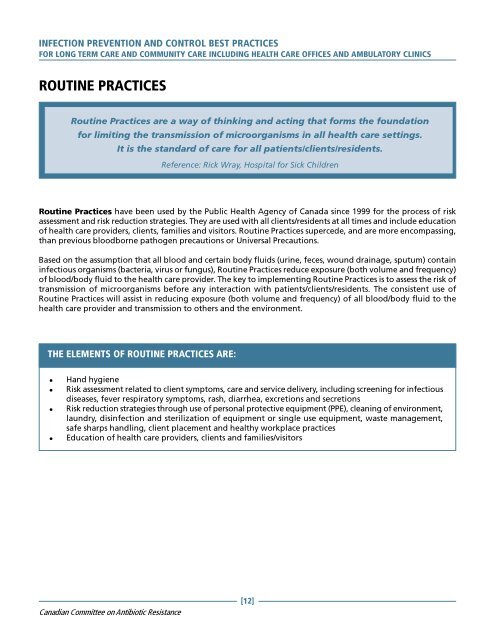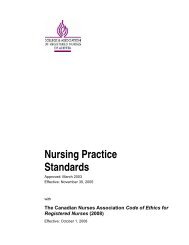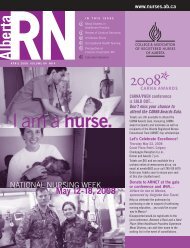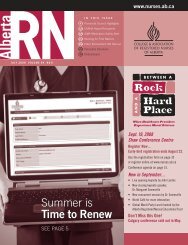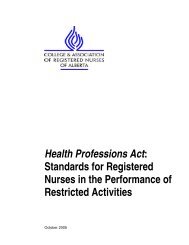Infection Prevention and Control Best Practices - College ...
Infection Prevention and Control Best Practices - College ...
Infection Prevention and Control Best Practices - College ...
You also want an ePaper? Increase the reach of your titles
YUMPU automatically turns print PDFs into web optimized ePapers that Google loves.
INFECTION PREVENTION AND CONTROL BEST PRACTICES<br />
FOR LONG TERM CARE AND COMMUNITY CARE INCLUDING HEALTH CARE OFFICES AND AMBULATORY CLINICS<br />
ROUTINE PRACTICES<br />
Routine <strong>Practices</strong> are a way of thinking <strong>and</strong> acting that forms the foundation<br />
for limiting the transmission of microorganisms in all health care settings.<br />
It is the st<strong>and</strong>ard of care for all patients/clients/residents.<br />
Routine <strong>Practices</strong> have been used by the Public Health Agency of Canada since 1999 for the process of risk<br />
assessment <strong>and</strong> risk reduction strategies. They are used with all clients/residents at all times <strong>and</strong> include education<br />
of health care providers, clients, families <strong>and</strong> visitors. Routine <strong>Practices</strong> supercede, <strong>and</strong> are more encompassing,<br />
than previous bloodborne pathogen precautions or Universal Precautions.<br />
Based on the assumption that all blood <strong>and</strong> certain body fluids (urine, feces, wound drainage, sputum) contain<br />
infectious organisms (bacteria, virus or fungus), Routine <strong>Practices</strong> reduce exposure (both volume <strong>and</strong> frequency)<br />
of blood/body fluid to the health care provider. The key to implementing Routine <strong>Practices</strong> is to assess the risk of<br />
transmission of microorganisms before any interaction with patients/clients/residents. The consistent use of<br />
Routine <strong>Practices</strong> will assist in reducing exposure (both volume <strong>and</strong> frequency) of all blood/body fluid to the<br />
health care provider <strong>and</strong> transmission to others <strong>and</strong> the environment.<br />
THE ELEMENTS OF ROUTINE PRACTICES ARE:<br />
� H<strong>and</strong> hygiene<br />
Canadian Committee on Antibiotic Resistance<br />
Reference: Rick Wray, Hospital for Sick Children<br />
� Risk assessment related to client symptoms, care <strong>and</strong> service delivery, including screening for infectious<br />
diseases, fever respiratory symptoms, rash, diarrhea, excretions <strong>and</strong> secretions<br />
� Risk reduction strategies through use of personal protective equipment (PPE), cleaning of environment,<br />
laundry, disinfection <strong>and</strong> sterilization of equipment or single use equipment, waste management,<br />
safe sharps h<strong>and</strong>ling, client placement <strong>and</strong> healthy workplace practices<br />
� Education of health care providers, clients <strong>and</strong> families/visitors<br />
[12]


